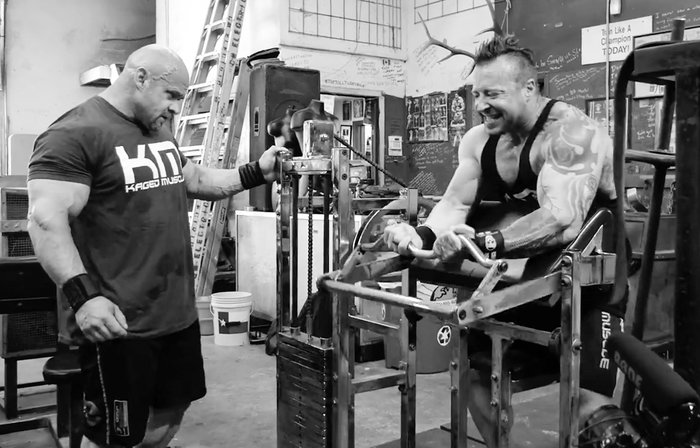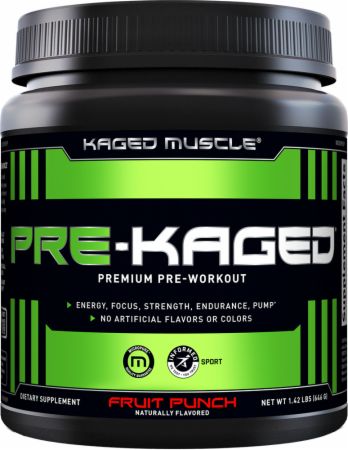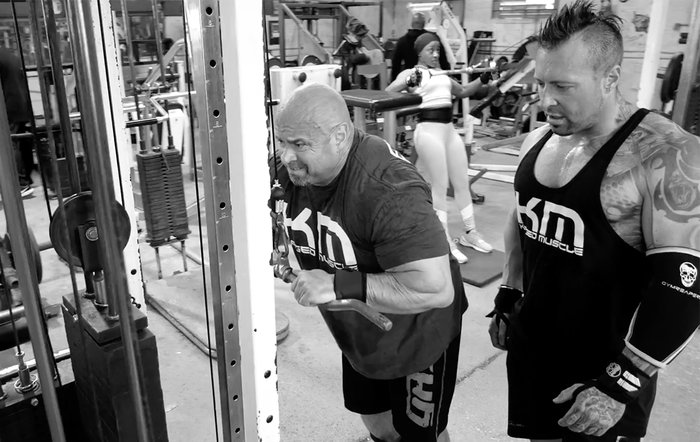When you get two bodybuilders like Kris Gethin and IFBB pro Branch Warren together in the same gym to train arms, you're bound to witness and soak in some no-fluff training wisdom.
Both guys admit there are endless ways to approach your workouts in terms of load and intensity. With years of training and experimenting under both their lifting belts, they've found exactly what yields the best results for them—and today they're focusing strictly on arms.
"I think if you train super strict with heavy weight and high intensity, you're gonna get hurt," Warren says. "But, like I always say, there's different ways of climbing Mount Everest; you just gotta find which one is the best way for you."
Gethin reminds us that there are many ways to go about your lifting, but as long as you're breaking down the muscle and feeling that mind-muscle connection, then keep at it. One way to enhance that connection is by generating a nice pump. To assist in that effort, Gethin recommends taking citrulline before your arm workout begins. This amino acid boosts nitric oxide generation and regulation for vascular dilation.
Ready to rock? Take these key pointers from their tandem arm workout and apply them to your own arm training!
1. Stop Wasting Your Time in the Gym
People love to brag about long training sessions, but how productive are they, really? Gethin and Warren agree that the gym isn't the time or place for social hour.
"It's not about how much time you spend in the gym, it's about the quality of time that you spend in the gym," Warren says. "I've seen guys spend an hour and a half just training arms. We did 45 minutes and got a great pump."

And quality time doesn't mean quality time with your phone or with friends.
"That's how I trained my entire career: When you go to the gym, you go there to train," adds Warren. "You're not there to take selfies or to get a date. No fucking around or talking shit with your buddies and never train. Go in with that mindset: You train, you get it done and get out."
2. High-Volume Workouts for Long-Term Success
"I used to train like the typical [six-time Mr. Olympia winner] Dorian [Yates]-style of training: low repetitions, longer rest periods," Gethin says. "But I just found the inflammation and the joint stress that I was getting from that definitely had its negatives. I wasn't enjoying the training anymore, so I had to change it up."
Having changed it up, he now feels better throughout his workouts, and the results are evident in his physique.

3. Skip the Ego Lifting
In case you're wanting to avoid a hard lesson learned by way of injury, take the advice of Gethin and Warren: Just say no to ego lifting. They credit social media for encouraging some guys to push bigger weights than they should be handling. There's a time and place for big weights, but whether you're bodybuilding or pursing more general physique goals, it's not necessary.
"In this day and age, you see people training toward the weights that, like, you [Branch] do or what [eight-time Mr. Olympia winner] Ronnie [Coleman] used to do, but they have no rhyme or reason why they should be doing it," Gethin observes. "And I've always said, it isn't really as important how much you lift as it is how much you look like you lift."
Warren adds that he always tries to go as heavy as possible, but within reason. His mantra: Lift the most weight you can handle, as many times as you can. Rest, then do it again.
4. Don't Worry About the Form Police
When you're competing in sports like powerlifting, form will matter greatly, as Warren points out. But both he and Gethin agree that high-volume training for arms—or any other body part for that matter—is all about feel and finding what's most effective for you to achieve a mind-muscle connection.

"This is bodybuilding." Warren says. "Nobody is worried about what your form is on curls when you're on the Olympia stage. All they care about it is how your biceps look, how your legs look, how everything looks as a package. That's what's most important."
Gethin's goal is not so much flawless form as it is getting blood into the muscle and feeling it working.
"I know when I train super strict, I feel under strain," he says. "I feel like something's going to pop. And look at Dorian and the way that he trained: perfect, textbook form, but look at how many muscles he tore. It all comes down to that person and how comfortable you feel under that way at the end of the day."
5. Investing in Your Recovery
"I had a conversation with [four-time Mr. Olympia winner Jay] Cutler two weeks ago, and he was telling me that for all the recovery treatments he had—fascia stretching, the massage, the rehab—he was spending 800 bucks a month," Gethin recalls. "He said, 'No one else was doing it, but I was doing it because I realized, man, this is an investment that I'm making here.' So, he justified it."
Warren says he had the same three appointments every week for 10 years: deep tissue massage at least once—sometimes twice if he needed it—muscle activation therapy, and a chiropractor.
"I realized recovery, especially the last 10 years of my career, was the most important thing. If you don't recover, it doesn't matter how hard you trained and how much you ate. You don't recover, you don't make progress," he says. "It was expensive, but that was a necessity. It's like a race car driver. He's got to put new tires on his car every time he races."
